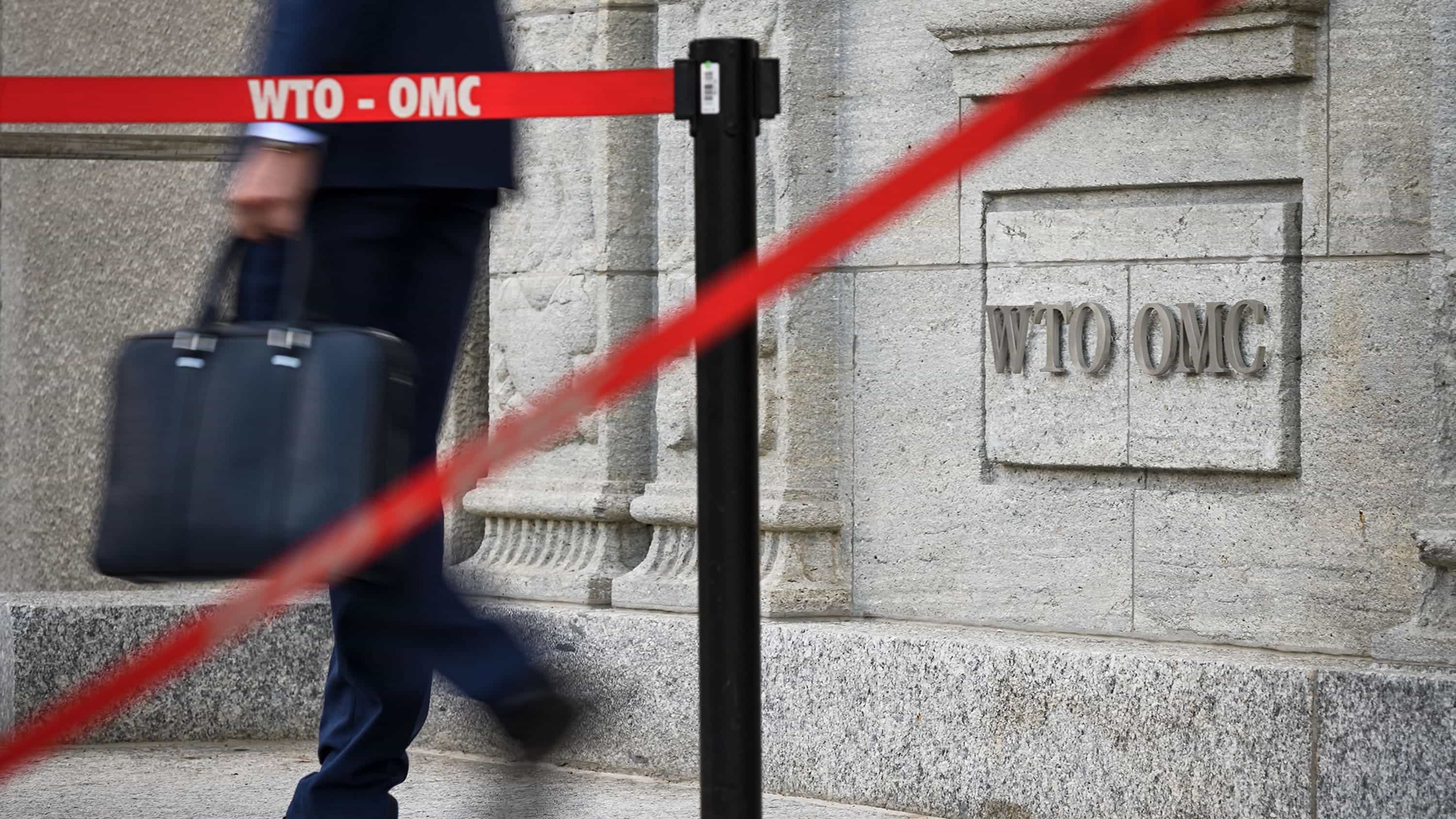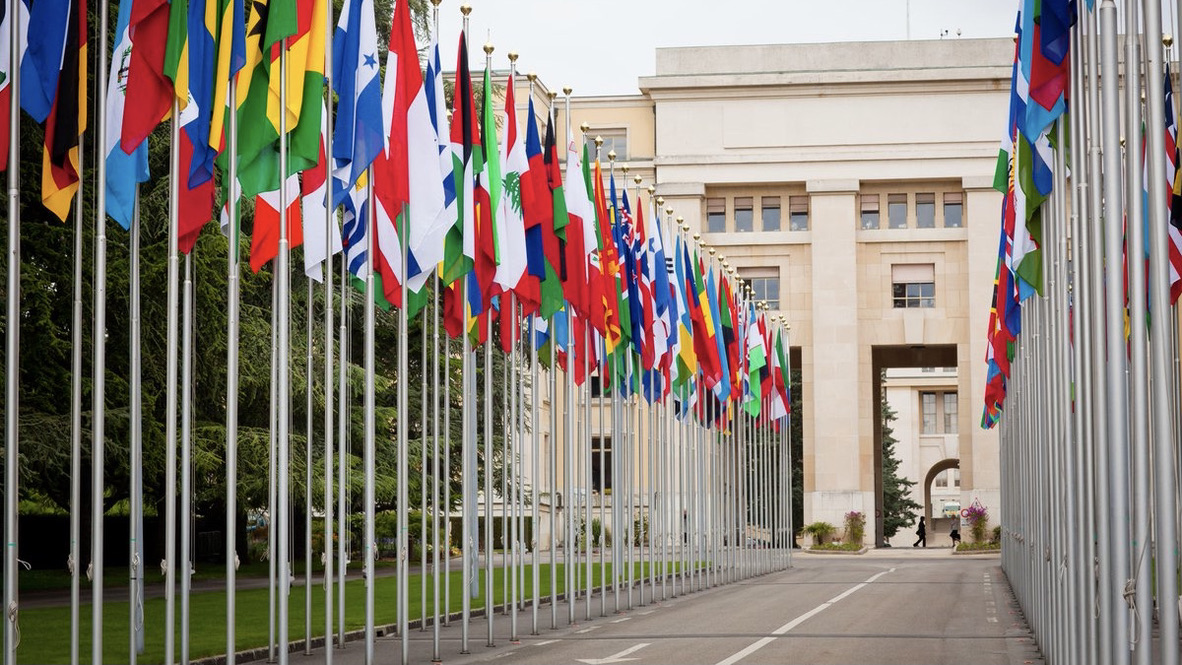Published 07 November 2023
When one considers the WTO's present framework, one must ask whether the global trading system's presumptive guardian is approaching an evolutionary dead-end. No matter how difficult, the WTO must reform to survive, and this can only be done by identifying the system’s shortcomings and ways to tackle them.
Complex systems must evolve to survive. The World Trade Organization (WTO) has evolved little since its creation in 1995. Its architecture, largely inspired by the post-war General Agreement on Tariffs and Trade (GATT) is both flawed and out-of-date. It is time to rethink how we manage international trade to ensure the WTO’s survival. This can only be done by identifying the system’s shortcomings and determining how to address them.
The most important shortcoming is that trade rules almost always ignore how products are manufactured. The antiquated principles underlying the trade system were largely formulated before 1947 when environmental and labor laws were weak or non-existent. As a result, members with lax environmental and labour laws often enjoy a comparative advantage when they place their products into global value chains since “negative externalities”, such as carbon emissions, are not normally taxed or otherwise valued in the sale price.
This shortcoming is apparent when viewed from the perspective of climate change, an existential problem linked indirectly with the trading system. Carbon emissions may occur at all stages of a product’s “lifecycle” – production, transport, use, and disposal. This “embedded carbon” is a negative externality as it is normally not factored into product prices.
Some developed countries that apply stringent environmental regulations seek to level the playing field by factoring the cost of carbon emitted during the production process into product prices. For example, the European Union is moving unilaterally with its Carbon Border Adjustment Mechanism (CBAM) to tax certain carbon-intensive goods that enter its market. If an equivalent tax is imposed on domestically produced goods in conformity with the national treatment principle, CBAM may eventually prove to be a WTO-legal way to encourage carbon reductions, meet emissions targets, and address claims of unfair competition.
WTO members could agree to a CBAM-like program. This would function like a tariff and would reduce the likelihood of a race to the bottom – the relocation of carbon-intensive industries to developing countries with lower environmental standards. The protection afforded by a carbon tax would provide producers with an incentive to reduce carbon emissions as this would reduce their tax burden and make them more competitive.
As easy as this sounds, this will never happen under existing WTO practice. This leads us to the second WTO shortcoming, an important systemic flaw. GATT contracting parties, and now WTO members, have always made important decisions by consensus. With 164 members, it is almost impossible for WTO members to reach an economically meaningful consensus on difficult issues, particularly when developed and developing country interests collide. Likewise, a consensus is unlikely when the interests of environmentally sensitive countries differ from those of hydrocarbon producers and consumers. The consensus practice has paralyzed WTO progress – witness the failure of the Doha Round and the ability of the United States to undermine the dispute settlement system by unilaterally blocking Appellate Body appointments. A win for politicians, but a loss for the global economy.
While economists appreciate the benefits of trade, politicians often do not. Political discord has frozen the development of the rules-based trading system which helped bring peace and prosperity to the world. The system’s presumptive guardian, the WTO, is dependent on the decisions of its members’ politicians and there is no consensus among those leaders for advancement or change.
Self-selection, the third WTO shortcoming, is another GATT vestige in need of reform. Two-thirds of WTO members, some with high per capita and national incomes, identify themselves under the self-selection principle as “developing countries”. As a result, developed country politicians will never accept a system of majority voting for fear that their economic interests will be overwhelmed, and their sovereignty undermined by disadvantageous trade rules. An alternative to the consensus system is needed, short of majority voting. As there are few viable possibilities, WTO members have increasingly turned to the negotiation of plurilateral agreements within the WTO, or free trade agreements outside the WTO that contain environmental and labor chapters.
Environmental and labor lapses, the consensus system, and self-selection are not the only problems confronting the international trade regime. The fourth shortcoming is the obsolescence of the tariff-based system. The raison d’être of the GATT was the negotiation of tariff reductions. Originally conceived as a tool to collect revenue and protect domestic producers, tariffs have largely outlived their usefulness. Industrial tariff bindings in the developed world are already low. These producers do not need tariff protection; they need protection from environmental and social dumping. Developing countries are also relying less on tariff protection. They are increasingly joining regional and mega-regional free trade agreements which eliminate tariffs on substantially all goods. In addition, they participate in Generalized System of Preference programs (GSP) which often condition tariff reductions or duty-free access on an agreement to meet higher environmental and labor standards.
A trade system based on tariff reductions served its purpose in 1947 when tariffs were high and goods were made from components originating in one or two countries. In a world of global supply chains, tariffs and the rules of origin that underpin tariffs make less sense. Complex products contain materials and components from many jurisdictions. Imposing a tariff on such products based on an arbitrary rule of origin – often where the last “substantial transformation” took place (frequently assembly) is bereft of logic. Assembly operations often pale in value compared to the revenue obtained by the manufacturers of high-tech components, or the revenue received by patent, copyright, or trademark holders. In addition, imposing tariffs on environmentally beneficial goods, such as solar panels and wind turbines, is counterintuitive.
A better example is in the services trade, which leads us to the fifth shortcoming. Services are not subject to tariffs (except indirectly when incorporated in a good). This is a progressive feature. However, the WTO General Agreement on Trade in Services (GATS) is not ambitious. The GATS relies on a positive list approach, meaning that a service sector is closed to foreign service providers unless a member has agreed to open it. Many modern free trade agreements apply a more ambitious negative list approach which opens all service sectors that are not marked as closed. If WTO members were serious about reaping greater economic benefits from service sector liberalization, they would have adopted a negative list approach. This is particularly true in Mode 3 (commercial presence), a GATS term that defines services supplied by a WTO member though commercial presence in another member’s territory, which is an economically beneficial form of foreign direct service sector investment.
The sixth shortcoming is more vexing and a political flashpoint. Many countries believe China is not playing by WTO rules regarding its provision of subsidies to and its treatment of its state-owned enterprises. WTO members chose to admit China expecting that it would transition to a market economy. Instead, China has developed a successful model of state capitalism that appears to favor its state-owned enterprises. In its Protocol of Accession, China agreed to allow market forces to determine the price of goods and services, to liberalize the right to trade goods, and to subject its state trading enterprises to greater transparency. Many of China’s trading partners believe that it has not fulfilled these promises and are calling on China to manage its state-owned enterprises on a more commercial basis by enacting stronger subsidy, regulatory, and transparency disciplines to address alleged unfair competition.
This leads us to the seventh shortcoming. While there may be a need for stronger subsidy disciplines, for example those accorded directly and indirectly to hydrocarbon producers and users, there may also be a need for laxer disciplines on environmental subsidies. Prior to 2000, the WTO Agreement on Subsidies and Countervailing Measures (SCM) permitted environmental and research and development subsidies. This provision lapsed in 2000, with the result that environmental and R&D subsidies are now actionable under the SCM Agreement. Given the threat posed by climate change, there is a need to examine the potential benefit from “green subsidies” – those related to solar, wind, tidal, and geothermal energy.
When one considers the above shortcomings, one must ask whether the WTO is approaching an evolutionary dead-end. The consensus-based approach to decision-making is not effective in a system with 164 members that have different development levels, different political and economic priorities, and different systems of government. None of the above problems are likely to be resolved in the present framework. Future trade negotiations will be just as unsuccessful as the Doha Round unless WTO members develop a new negotiating model. No matter how difficult, the WTO must evolve if it is to survive.
To evolve, WTO members should learn from their successful plurilateral agreements – the Information Technology Agreement and the Agreement on Government Procurement. The negotiation of these agreements began with a limited number of participants that shared a common vision. WTO members that did not share this vision were not required to participate in the negotiations, but they remain free to join when ready.
While the variable geometry of plurilateral approaches fragments the WTO membership, it maintains negotiations within the WTO and offers a viable path forward. If the Tokyo Round experience is a valid indicator of future performance, over time other WTO members will join successful plurilateral agreements and these agreements will eventually be multilateralized. The multilateralization of the Tokyo Round plurilateral agreements is one instance where past GATT practice led to the evolutionary advancement of the present rules-based trading system. The case for plurilateral agreements is already compelling, but their multilateralization will require atavistic politicians to evolve or be replaced.
© The Hinrich Foundation. See our website Terms and conditions for our copyright and reprint policy. All statements of fact and the views, conclusions and recommendations expressed in this publication are the sole responsibility of the author(s).










